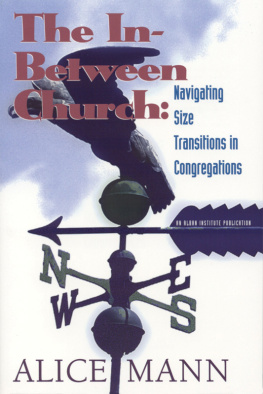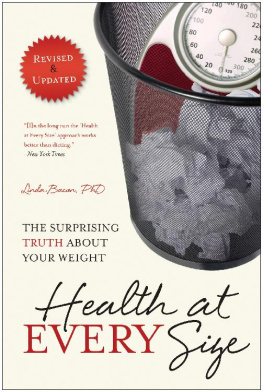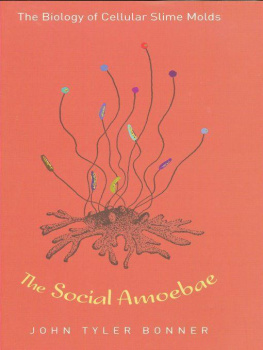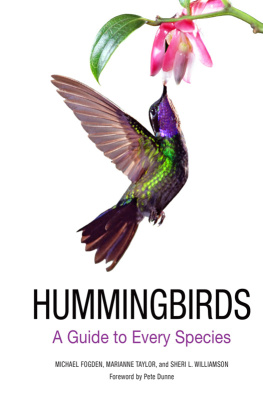WHY
SIZE
MATTERS
WHY
SIZE
MATTERS
FROM BACTERIA TO BLUE WHALES
John Tyler Bonner

Copyright 2006 by Princeton University Press
Published by Princeton University Press, 41 William Street,
Princeton, New Jersey 08540
In the United Kingdom: Princeton University Press,
6 Oxford Street, Woodstock, Oxfordshire OX20 1TW
press.princeton.edu
All Rights Reserved
Sixth printing, and first paperback printing, 2012
Paperback ISBN: 978-0-691-15233-2
The Library of Congress has cataloged the cloth edition of this book as follows
Bonner, John Tyler
Why size matters : from bacteria to blue whales / John Tyler Bonner.
p. cm.
Includes bibliographical references and index.
ISBN-13: 978-0-691-12850-4 (hardcover : alk. paper)
ISBN-10: 0-691-12850-2 (hardcover : alk. paper)
1. Body size. I. Title.
QL799.B66 2006
578.4'1dc22 2006004945
British Library Cataloging-in-Publication Data is available
This book has been composed in Bembo and Helvetica Neue
Printed on acid-free paper.
Printed in the United States of America
7 9 10 8 6
for Slawa
CONTENTS
One can live in the shadow of an idea
without grasping it.
Elizabeth Bowen
PREFACE
Our interest in the size of things is entrenched in the human psyche. It reveals itself in literature from Gullivers Travels, to the Grimms fairy tales, to Alice in Wonderland. We see it in our daily thoughts of our growing children, of the people who are around us, of our pets, of the fish we catch, of the portions of the food we are served, of the clothes we buyare you small, medium, or large?and one could go on and on. There is hardly anything we observe in daily life that we, either consciously or unconsciously, do not take measure of its size. We love to measure everything with rulers and scales and clocks.
I began to think of the matter of biological size years ago when I first read that glorious chapter in DArcy Wentworth Thompsons On Growth and Form called On Magnitude. It is a model of insight, erudition, and beautiful prose. He showed me that size and shape are indeed interrelated and that the reason that this is so is a matter of physics that underlies the biology. From this initial inspiration there slowly grew inside me the feeling that there was a hidden other dimension of the subject that was eluding me. That inner feeling persisted for many years, and slowly something began to take shape. I am finally putting it all together in this bookI feel as though those shadowy thoughts have erupted through the surface.
This book is a summary of those thoughts. It is an enormous subject that I try to bring down to reasonable dimensions so that I can include it all. As will be clear, I am interested in painting the big picture on a small canvas.
If we are a bacterium, or an elephant, or a human being, we have our own size worlds, and for each of us there are things smaller and larger than ourselves. But no one can escape the universal rules imposed by size.
In looking at the subject of biological size in its entirety, from large to small, from plant to animal to microbe, it will be evident that everything is interconnected. An examination of the effects of size is a way of bringing all life together.

Just as the content of this book has almost taken a lifetime to mature, the actual writing has been an equally painful and slow process with innumerable adjustments and corrections in my course as I proceeded. These were greatly helped by the kindness and wisdom of numerous individuals to whom I am deeply indebted. Before I even began the book, my colleague Henry Horn was enormously helpful (as he has always been over the years) in purifying my thoughts about size. At a very early stage of writing I had the help of my friend Jonathan Weiner, who urged on me the need for a sense of direction. The first complete draft of this book (still in its underwear!) was prematurely sent to two anonymous readers, and while the comments of one of them were highly critical, they gave me the needed jolt at just the right moment. Later drafts were greatly improved due to the comments of Sam Elworthy, Brian Hall, Slawa Lamont, Mary Jane West-Eberhard, and another anonymous reviewer. Also I want to thank David Kirk for his help with the section on Volvox and its relatives, and my colleague Ted Cox on some matters of physics. I almost feel as though they all ought to be listed as co-authors. My special thanks to Alice Calaprice and Deborah Tegarden for their skill and great help in seeing the book through its final stages of preparation. Finally I would like to thank Hannah Bonner for applying her superb illustrator skills to produce seven of the original drawings.
MARGAREE HARBOUR
Cape Breton, Nova Scotia
WHY
SIZE
MATTERS

CHAPTER 1

INTRODUCTION
In the seventeenth century it was held by some that inside a human sperm there was a minute human beinga homunculusthat was planted inside the womb. Development consisted of the miniature homunculus enlarging and passing through birth and on to maturityjust like inflating a balloon. There were others, going back to the early ideas of Aristotle and the many who followed him, who took the view that vast changes in shape occurred between egg and adult, for it could be plainly seen that the early stages of development of any animal bore no resemblance to what came later. These two views frame the point I want to make in this book. In the case of the homunculus, shape is totally unconnected to size; as size increases shape remains unaltered. In the other casenow totally acceptedas size increases from egg to adult, the shape must change; there is no alternative.
Let me put the matter in another way. If an engineer is commissioned to build two bridges, one across the Hudson River and the other across a brook no more than 30 feet wide, it is quite obvious that the two bridges will be very different in their appearance. Even more importantly, they will differ in their construction and materials. These differences will have nothing to do with the artistic whims of the engineer, at least for the larger bridge: they are absolute requirements. Any attempt to build the Hudson River bridge with wooden planks would collapse into the water long before it was finished. The elaborate steel trusses and the carefully designed architecture of the huge bridge are demanded by the width of the Hudsonit is dictated by its large size. As we shall see, this perfectly mirrors what happens in living organisms; they too cannot escape the conditions set by size; they have no choice.
With these thoughts in mind, let me state the main argument of this book. Changes in size are not a consequence of changes in shape, but the reverse: changes in size often require changes in shape. To put it another way, size is a supreme regulator of all matters biological. No living entity can evolve or develop without taking size into consideration. Much more than that, size is a prime mover in evolution. There is abundant evidence for the natural selection of size, for both increases and decreases. Those size changes have the remarkable effect that they guide and encourage novelties in the structure of all organisms. Size is not just a by-product of evolution, but a major player. Size increase requires changes in structure, in function, and, as we will see, in other familiar evolutionary innovations. It requires them because they are needed for the individual to exist. Life would be impossible without the appropriate size-related modifications.
Next page












 CHAPTER 1
CHAPTER 1 